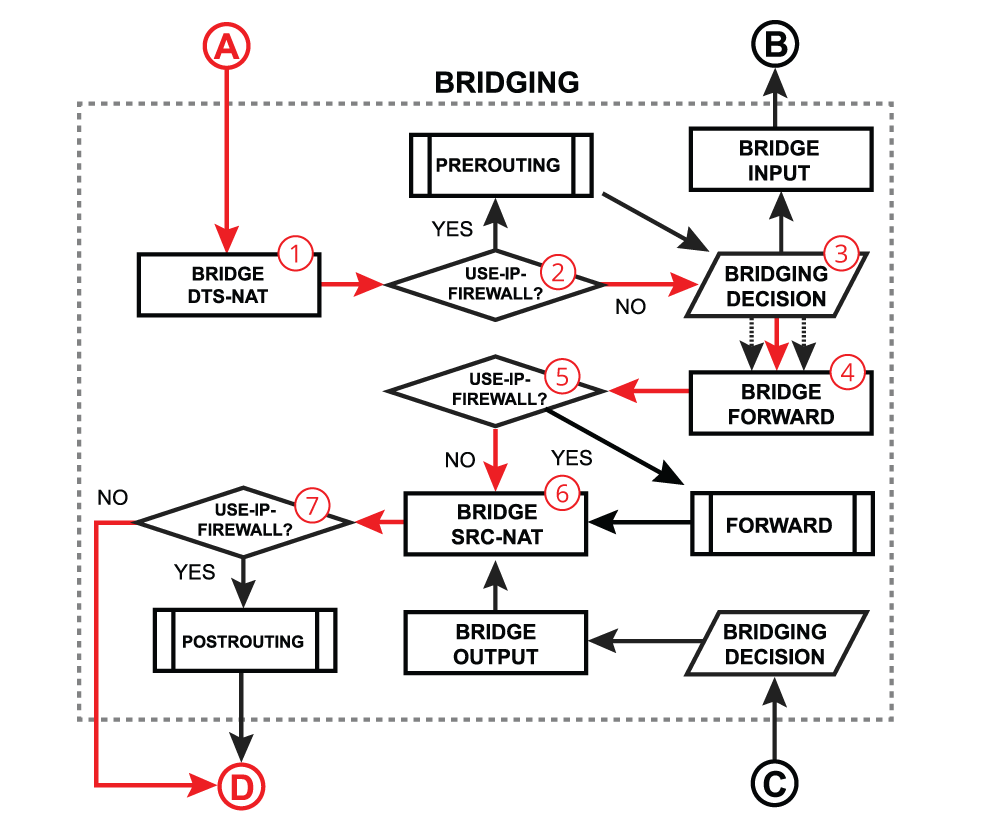For RouterOS v6:
When bridge vlan-filtering is enabled, received untagged packets might get encapsulated into the VLAN header before the "DST-NAT" block, which means these packets can be filtered using the mac-protocol=vlan and vlan-encap settings. Encapsulation can happen if the outgoing interface has frame-types is set set to admit-all or admit-only-untagged-and-priority-tagged. Tagged packets might get decapsulated on the "BRIDGING DECISION" block, which means these packets will no longer match the mac-protocol=vlan and vlan-encap settings. Decapsulation can happen if the packet's VLAN ID matches the outgoing port's untagged VLAN membership.
For RouterOS v7 and newer: When bridge vlan-filtering is enabled, received untagged packets might get encapsulated into the VLAN header on the "BRIDGING-DECISION" block, which means these packets can be filtered using the mac-protocol=vlan and vlan-encap settings. Encapsulation can happen if the outgoing interface has frame-types set to admit-all or admit-only-untagged-and-priority-tagged. Tagged packets might get decapsulated on the "BRIDGING DECISION" block, which means these packets will no longer match the mac-protocol=vlan and vlan-encap settings. Decapsulation can happen if the packet's VLAN ID matches the outgoing port's untagged VLAN membership. | 